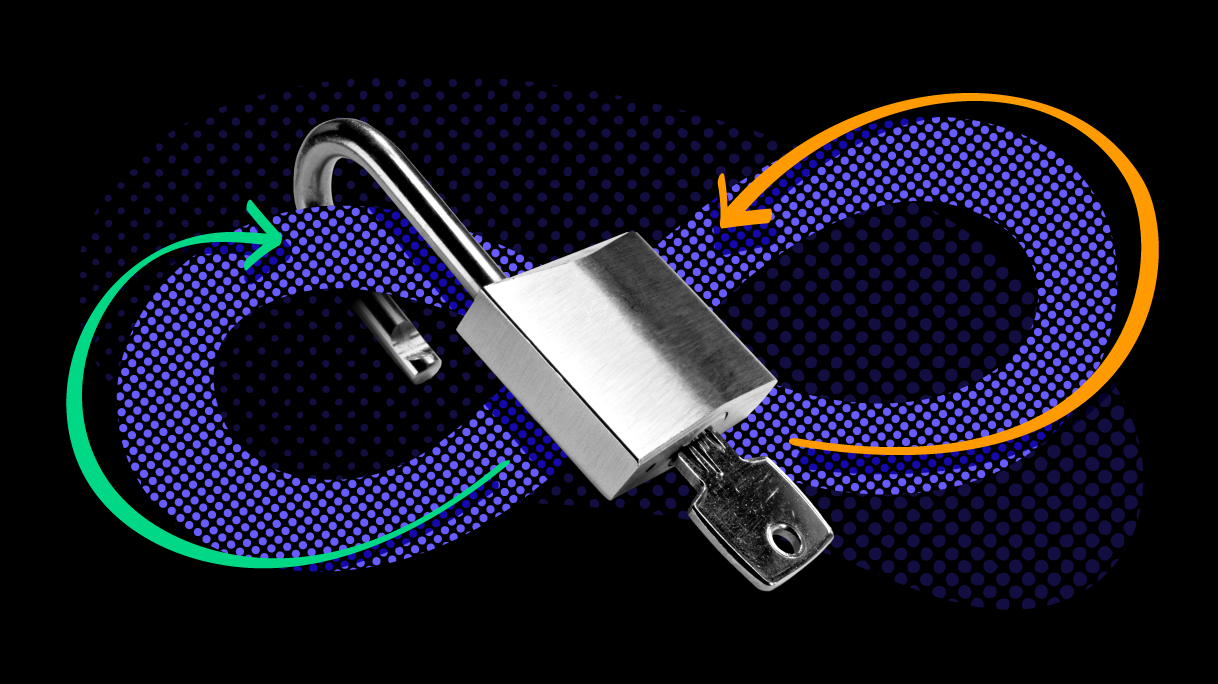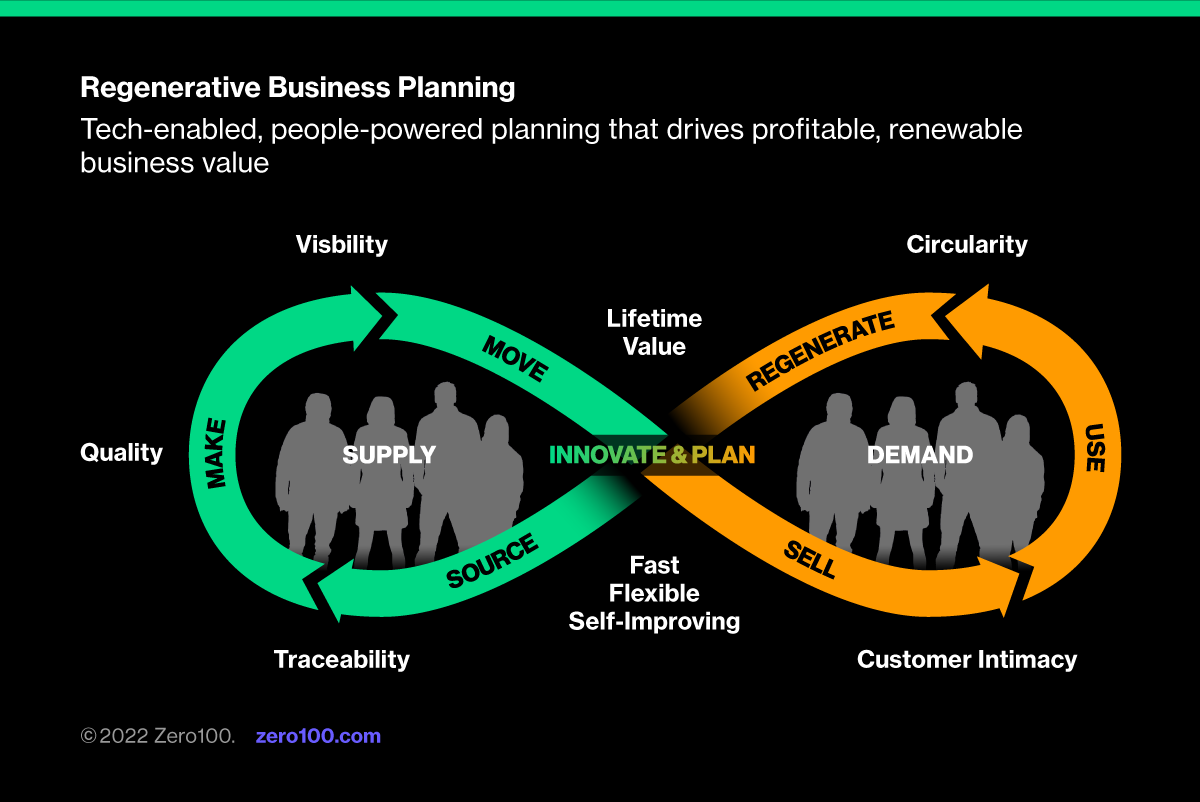
Is Planning the Key to Zero100 Supply Chains?
The Zero100 “Loop” model connects supply chain (source, make, move) to demand chain (sell, use, regenerate) and has no beginning or end. It does however have a central and most critical functional role: planning. “Innovate & Plan” is at its center because this function is precisely where data about the full lifetime value of a business should converge.
Imagine an infinite loop that ties the work of supply chain management to the full customer lifecycle in an endless quest to grow and renew the business. The idea is to replace the extractive linear logic of “plan, source, make, deliver” with a digitally supported system that regenerates not only the materials we need to live happy, healthy lives, but also the revenue and enterprise value we earn as a business.

This “Loop” model connects supply chain (source, make, move) to demand chain (sell, use, regenerate) and has no beginning or end. It does however have a central and most critical functional role: planning.
This is not an accident.
Supply Chain Planners Will Save the World
15 years ago, while working at AMR Research I helped assemble a book called Supply Chain Saves the World. The title was meant to provoke discussion about a future where supply chain enables sustainability without sacrificing profitability. Since then, many leading companies (Unilever, Walmart, IKEA, Colgate-Palmolive) have made huge strides to improve the sustainability of their sourcing, manufacturing, and logistics. These account for most of the GHG emissions and wider social and environmental impacts of these brands’ operations.
Planning, in contrast, is typically a small group of people with a tiny carbon footprint. And yet, their leverage, especially in the AI era, is so massive that the true breakthroughs getting us to Zero100 supply chains will mostly happen here – in a function we now call “Innovate & Plan”.
First, Know Your Customer
Start with the demand planning. Forecasting is already proven as an effective application of machine learning and deep neural nets. Amazon pioneered this practice and achieved 15x greater forecast accuracy improvements. This experience is typical for leaders like Walmart and Kroger. Ingesting ever more data about customers’ buying behavior opens the door to understanding and shaping not only sales volumes but also customer re-buy and therefore lifetime value.
For durables including consumer categories like autos, electronics and white goods, the same concepts apply, but with even more data coming from IoT sensors feeding analytics that tell brand managers how to keep customers happy with their Subarus, HP printers, and GE appliances. On the B2B side this is even more true, as demonstrated by Caterpillar, Hilti, and others who sell uptime instead of features to their business customers.
The way our Loop portrays this is in data from sales channels (Sell), user experience (Use), and end-of-life performance (Regenerate). The demand chain already creates 5-10x more data than the supply side (Source, Make, Move) and provides a picture of not only the scope 3.11 carbon (product in use), but also includes factors that engage customer intimacy to drive net promoter scores. Mined for maximum insight by AI-enabled planners, this data could inform everything from pricing and returns policies to product portfolio planning.
Next, Know Your Business
Now to the supply side. Planning for materials, production, inventory, and delivery is our most fundamental skill. In the Loop model, enabled by ever deeper simulation including digital twins and machine learning applications for better part selection, production pathways, and inventory placement, supply planners have a chance to get smart about saying “yes”, but with conditions.
Microsoft made an art of this notion during the pandemic supply chain crisis. Its planners got so good at knowing how to handle supply problems with promises on a daily basis that they built trust with customers and added serious value to the company’s share price. As an exemplar of what we call “Regenerative Business Planning”, Microsoft’s team was able to build a fast, flexible, self-improving supply chain under pressure.
Be the Spark of Innovation
The Loop shows “Innovate & Plan” at its center because this function is precisely where data about the full lifetime value of a business should converge. At the tactical it will ensure the right data can provide traceability, quality, and visibility to control cost and service. At the strategic level it will help with capital planning, design for circularity, and development of renewable revenue business models.
And, at the level of working for a sustainable future, it will help businesses optimize for customers, cash, and carbon well into the 21st century.